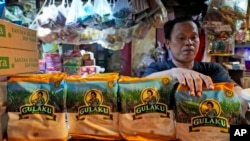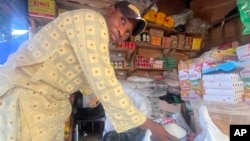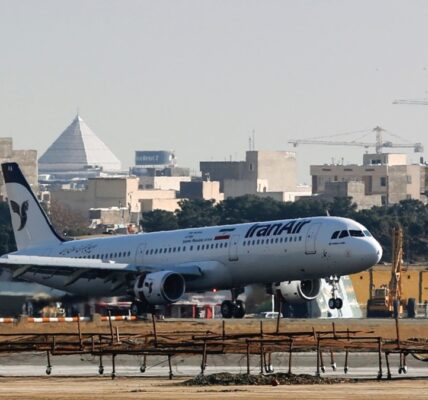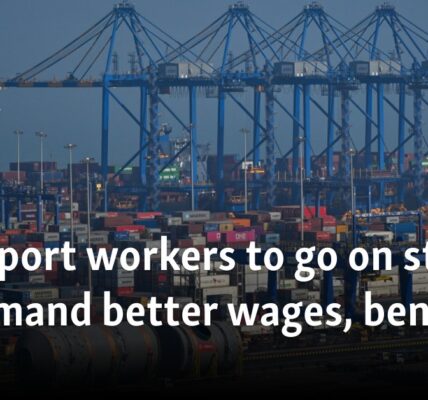The cost of sugar has increased globally due to crop damage caused by severe weather conditions in Asia.
Ishaq Abdulraheem was faced with limited options due to the steep rise in sugar prices. Raising the price of bread would result in lower sales, prompting the Nigerian baker to reduce his production by 50%.
Numerous bakers faced financial difficulties as they tried to cope with rising expenses for fuel and flour. The extremely high sugar prices were the final blow, forcing many to permanently shut down their businesses.
Sugar is needed to make bread, which is a staple for Nigeria’s 210 million people, and for many who are struggling to put food on the table, it offers a cheap source of calories. Surging sugar prices — an increase of 55% in two months — means fewer bakers and less bread.
Abdulraheem stated that the situation is highly grave.
Global sugar prices are currently at their highest levels since 2011, primarily attributed to decreased global supplies caused by a shortage in India and Thailand due to abnormal dry weather conditions. These two countries are the second- and third-largest sugar exporters in the world.
This is just the latest hit for developing nations already coping with shortages in staples like rice and bans on food trade that have added to food inflation. All of it contributes to food insecurity because of the combined effects of the naturally occurring climate phenomenon El Nino, the war in Ukraine and weaker currencies. Wealthier Western nations can absorb the higher costs, but poorer nations are struggling.
According to Fabio Palmeri, a global commodities market researcher at the United Nations Food and Agriculture Organization (FAO), there is a projected 2% decrease in worldwide sugar production for the 2023-24 period compared to the previous year. This would result in a loss of approximately 3.5 million metric tons. One contributing factor to this decline is the increasing use of sugar for biofuels, such as ethanol. As a result, the global reserves of sugar are currently at their lowest level since 2009.
Brazil is the biggest sugar exporter, but its harvest will only help plug gaps later in 2024. Until then, import-dependent countries — like most of those in sub-Saharan Africa — remain vulnerable.
For example, Nigeria purchases 98% of its unprocessed sugar from external nations. However, in 2021, it prohibited the import of refined sugar as it goes against their goal of developing local sugar production. Additionally, they revealed a $73 million initiative to enhance their sugar infrastructure. Unfortunately, these are tactics that will take time to see results. In the meantime, traders in Abuja, like Abba Usman, are currently experiencing difficulties.
Usman’s recent purchase of a 50-kilogram bag of sugar for $66 has now increased to $81. This rise in price has resulted in a decrease in his customer base.
Usman stated that the cost continues to rise on a daily basis and the reason is unknown.
The El Nino, a natural occurrence that alters worldwide weather patterns and can result in severe weather events such as droughts and floods, is partially responsible. Researchers suggest that the intensification of El Nino is linked to climate change.
India experienced its most arid August in more than 100 years, and crops in the western state of Maharashtra, responsible for more than one-third of the country’s sugarcane output, were hindered during the critical growth period.
The Indian Sugar Mills Association predicts that sugar production in India will decrease by 8% this year. As the most populous country in the world, India is also the top consumer of sugar and has implemented restrictions on sugar exports.
According to Naradhip Anantasuk, the leader of the Thailand Sugar Planters Association, early El Nino conditions in Thailand affected both the amount and quality of the harvest. It is predicted that only 76 million metric tons of sugarcane will be processed during the 2024 harvest season, as opposed to the 93 million metric tons processed this year.
According to a report from the U.S. Department of Agriculture, Thailand is expected to experience a 15% decrease in output in October.
Within a few days, Thailand reversed its decision to increase sugar prices and instead implemented price controls, something that had not been done since 2018. Anantasuk explained that this measure was intended to discourage farmers from producing sugar by limiting their potential earnings.
He stated that it would inhibit the growth of the industry and stifle fair competition.
Wholesale prices were permitted to increase in order to support farmers in dealing with rising expenses. This was partly due to government regulations prohibiting the burning of fields, which reduces harvesting costs but also contributes to widespread smog in Thailand.
According to Kelly Goughary, a senior research analyst at Gro Intelligence, Brazil’s upcoming harvest is predicted to be 20% larger than the previous year’s. However, due to the country’s location in the Southern Hemisphere, this increase in global supplies will not occur until March.
The USDA attributes this to the favorable weather conditions in Brazil earlier this year and the expansion of sugarcane cultivation areas.
According to the FAO’s Palmeri, the upcoming months are causing the most worry. The increasing population and higher demand for sugar will put even more pressure on sugar supplies, he noted.
As of current, the global supply of sugar is below 68 days, a decrease from the 106 days recorded at the start of the decline in 2020. This information is based on data from the USDA.
According to Joseph Glauber, a senior research fellow at the International Food Policy Research Institute, it is currently at the lowest point it has been since 2010.
According to the USDA, Indonesia was the largest importer of sugar last year. However, they have reduced their imports and China, the second largest importer, had to use their existing stocks to balance out expensive domestic prices for the first time in six years. This information was reported by Palmeri.
According to FAO economist El Mamoun Amrouk, certain countries face the issue of depleting their foreign currency reserves, such as dollars and euros, when importing costly sugar. This can also impact their ability to purchase essential commodities like oil.
Kenya, which was previously able to produce its own sugar, now relies on importing 200,000 metric tons annually from a nearby trade organization. In 2021, the government initially restricted imports in order to support local farmers and reduce foreign competition, but eventually reversed this decision due to decreased harvests caused by inadequate rainfall and poor management.
The quantity of sugar produced in Kenya decreased consistently from June to August. To make up for this, the monthly imports increased twofold from September to October. At the same time, shopkeeper Joseph Kuraru reported that the cost of a 50-kilogram bag of domestic sugar doubled to $60.
In the largest economy of Africa, the challenges faced by Nigerian bakers reflect the consequences of increasing expenses for food and fuel, and the significant influence of expensive sugar due to its widespread usage. In Abuja, numerous bakeries rely on sugar for both adding sweetness to cakes and providing nourishment for the yeast used in making bread rise.
Bread is frequently the sole affordable food option for low-income households. When bakers increase the cost of bread, such as the 15% hike earlier this year, it can result in some individuals experiencing food insecurity.
Mansur Umar, the president of the Nigerian Bakers’ Association, stated that it is not feasible to avoid passing on increased expenses.
He stated that it is impossible to purchase at a high price and sell at a low price.
Source: voanews.com





